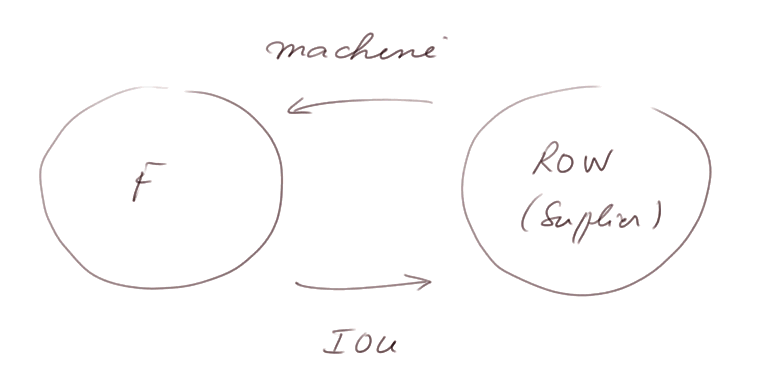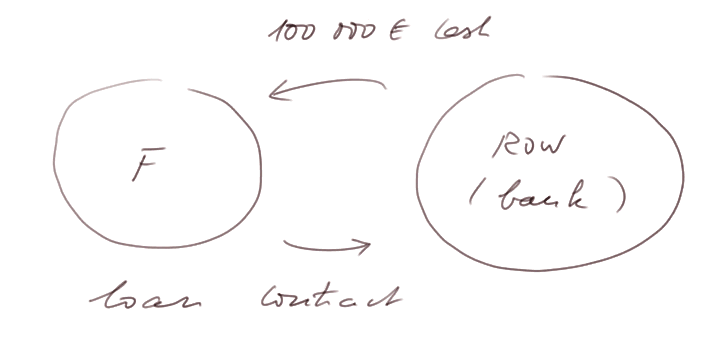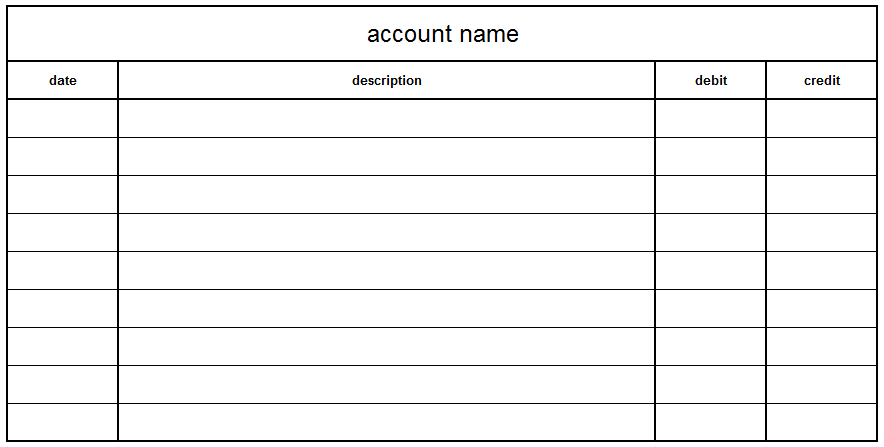General accounting
III. 12. Posting transactions (part 1)
Video
Value in and value out. We saw how we record value coming into the firm, and value leaving the firm:
- Value coming into the firm is recorded as debit in some account
- Value leaving the firm is recorded as a credit in some other account
Current expenditures (consumption) and capital expenditures (acquisition of durable assets):
- value coming into the firm may be consumed quickly (or just have been consumed),
- or it may stay within the assets of the firm for several years
Rule. In both cases the same rule applies:
Value coming into the firm is recorded as a debit in some account
If this rule is difficult to remember, recall that when we wanted to record an IOU coming from a client, we could not record it on the "cash page" without causing all sorts of trouble, so we created another page called the "debtors page", and we recorded the IOU, naturally enough, in a column called "debit".
Every transaction is made of two movements:
- value entering the firm,
- and value with the same monetary measurement leaving the firm
Example: let's look at the transaction: the firm buys a machine and gets credit from the supplier

A machine enters the firm, and at the same time an IOU leaves the firm.
Double-entry accounting. So, after having been recorded in the journal in chronological order, every transaction will entail two entries:
- one in debit, and one in credit
- whence the term "double-entry accounting"
Double-entry accounting, which records values of different natures, and treats each transaction as two movements, is more complicated than single-entry accounting, which is only concerned with cash. But it produces much more relevant and useful information to managers to run the firm.
Posting. The transformation of a journal entry describing a transaction in these two entries is called posting the transaction.
The rule looks wrong? Why the rule "value coming in is a debit" is counterintuitive, and even looks wrong?
Answer: Because you and me have no personal double-entry accounting system. We are accustomed to receiving a monthly report from our bank, on our bank account:
- when we "have money at the bank" our account is in credit
- and when we take even more money to the bank, our account is credited
So it looks wrong to say "value coming in is a debit".
But the bank doesn't send us an extract of our own personal double-entry accounting system (it usually doesn't exist), but from its accounting system, where one account bears our name. And it is mirror to what would be our view of the bank account in our double-entry accounting system, if it existed:
when we "have money at the bank", we are a creditor of the bank. And when we put more money into our bank account (at the bank) we are even more creditor: our account (at the bank) is credited.
Assets and liabilities. So in the accounting system of any firm, their will be plenty of pages recording values (in and out) of the same nature. Some will record assets, some will record what's called "liabilities".
For instance, when the firm borrows 100 000€ from a bank, the transaction is represented like this:

The 100 000€, say in cash, will be entered as a debit in the cash account. The cash account is part of the "assets" of the firm, that is what the firm owns.
And the loan contract, worth 100 000€, will be entered as a credit in the "debts to bank" account. It is a "liability" of the firm, that is a part of what the firm owes.
Lay-out of an account. All accounts will have exactly the same lay-out:

The four columns are: date, description, debit, credit.
Professional accounting softwares usually add another column in front (on the left) where there are some code numbers for the entries, but we shall not be concerned with that.
I was once asked if all fhis accounting I was teaching was the same as that which uses accounts with the shape of a T.
The answer is: yes :-)



